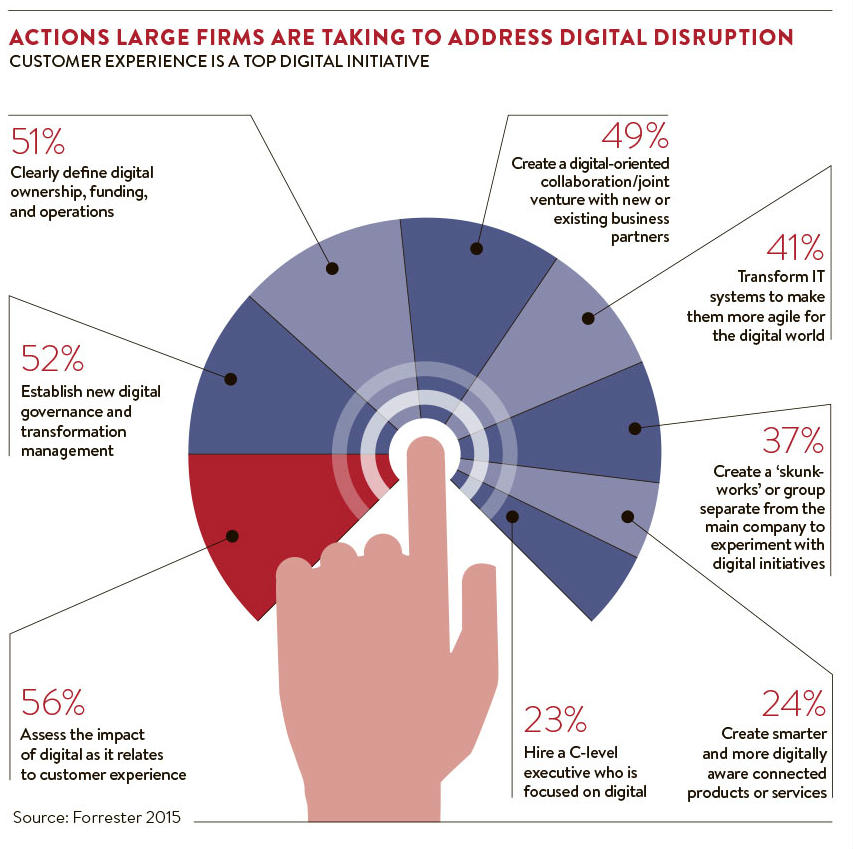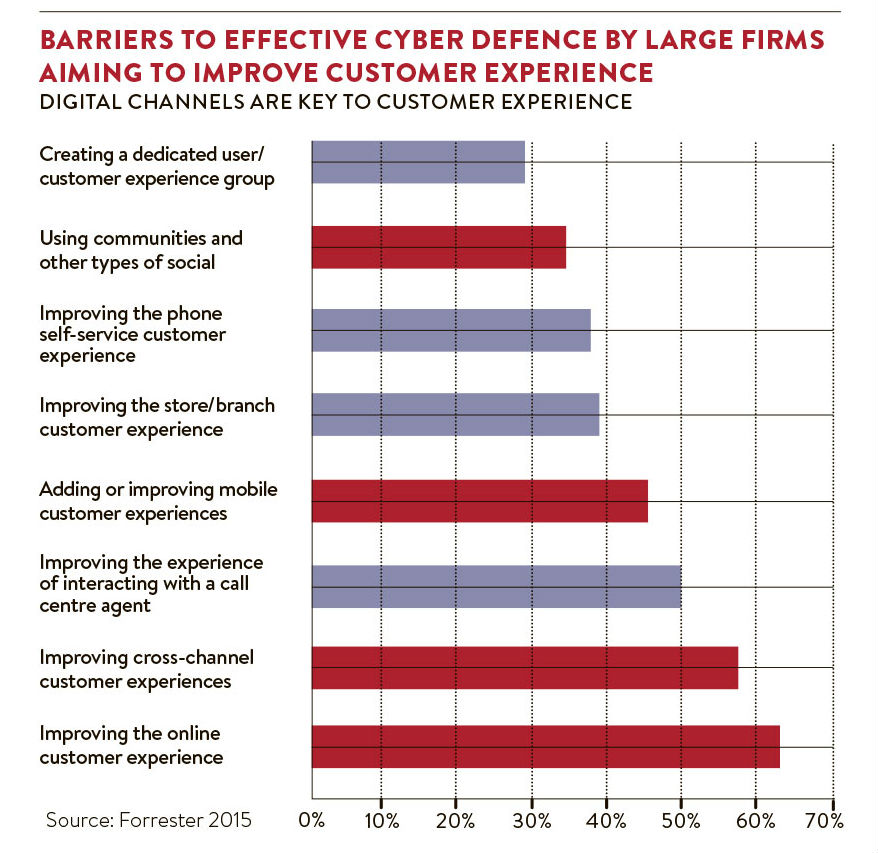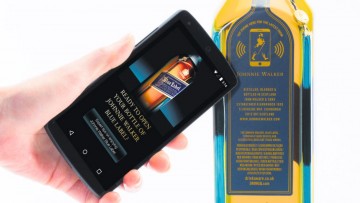Since the telephone was invented in the late-1800s, customer service has been evolving – and in 2016 the customer has never been so involved in the buying process.
Research from digital experience company Acquia shows that wearable technology and mobile devices, for instance, represent online commerce’s greatest opportunity and challenge.
Experts say this is why businesses should be putting customer experience at the heart of their digital strategies and constantly striving to improve it. Not all businesses are catching on so fast though.
Understanding the Hype Cycle
Ronan Gruenbaum from Hult International Business School says: “Gartner’s Hype Cycle shows how the point at which adoption and implementation of technologies by the general public and organisations lags behind the hype surrounding the technology. That time-lag could be months, but in the case of some technologies it could be years, virtual worlds and augmented reality being a case in point.
“It is only now, ten to fifteen years after people started talking about the potential of virtual worlds and multi-user virtual environments, such as Second Life, that the hardware is finally catching up through immersive 3D viewers like Oculus Rift and the kind of non-tactile interface provided by the type of technology running the Microsoft Kinnect gaming console, in the same way that 4G connectivity and the speed of mobile phones allows for augmented reality to become a viable proposition.”

Wearables, Mr Gruenbaum says, have gone through a much shorter hype cycle, with consumer-oriented products such as the Apple, Samsung or Motorola watches, being desirable gadgets selling in large numbers.
There are large segments of the population, who might be a core target audience for a particular organisation for whom these new technologies are used on a daily basis. Organisations can only know this by understanding their customers through research, communication and insight, he says.
Getting to know your audience
People are becoming more impatient as the variety of information they have available on their mobile devices allows them to be more connected, share their content more easily and find information quicker. “A result of this, any organisation which puts obstacles in the way of allowing a customer to complete their desired task in the moment is in danger of losing that customer to a competitor,” says Mr Gruenbaum.
Integrating the latest technology with the traditional store brings an added dimension to the shopping experience, enabling it to compete with online
Jamie Merrick, head of industry insights at software tech company Demandware, says millennial shoppers are using the high street as a giant showroom. He cites the rise in technologies such as magic mirrors, which allow shoppers to compare outfits side by side and visualise different options without even having to leave the changing room. These options are communicated to associates who can access stock.
“High street fashion retailers are relying on mirror technology to transform the changing room experience,” says Mr Merrick. Companies, such as Italian clothing firm OVS, for example, have embraced the “magic” fitting room by implementing large touch-screen mirror displays and QR codes so that customers can snap selfies of their outfit from different angles on their phones.
Shoppers can also send a message to the sales associate’s iPad for them to view in-store availability and bring different products to the customer. “Magic mirrors and other innovations, such as adidas’s interactive window, offer shoppers a dynamic and bespoke experience to the in-store retail environment,” says Mr Merrick, “Integrating the latest technology with the traditional store brings an added dimension to the shopping experience, enabling it to compete with online. The result is engagement with consumers in ways that are both familiar and exciting.”

Virtual and augmented reality
This year looks set to be the year that virtual and augmented reality really hit the mainstream, particularly as technologies, such as the Microsoft HoloLens, gain traction with their ability to layer interactive 3D holograms on top of a customer’s physical surroundings.
Stuart Dorman, head of apps at contact centre technology specialist Sabio, says: “Virtual reality will allow consumers to experience a 3D reproduction of a physical store in their home, opening up significant retail opportunities. Augmented reality offers real potential in sectors such as utilities and service management by allowing skilled operatives to guide customers through complex procedures, demonstrate products and visualise new places and experiences.”
The Acquia research also found that wearables are now a crucial buying platform, with owners using them for the pre-purchase (66 per cent), purchase (58 per cent) and post-purchase (58 per cent) stages.
However, wearables represent their own problems and the research found that almost half of consumers become irritated with them nearly three times a week, says Martyn Eley, Europe, Middle East and Africa vice president at Acquia, which works with customers including the BBC, the Brit Awards, Lush, LV=, Timex and Warner Music.
Keeping up with your customers
He says: “Consumers want to embrace new technologies, with 77 per cent of wearable device owners putting up with the frustrations that come with ‘early adopter’ use, but businesses can’t keep up. Brands should focus on delivering consistent and relevant content at multiple points in the customer journey through an ever-increasing number of channels. The research shows desktops are still the go-to device for buying online and brands that neglect this channel do so at their peril.
“Brands are battling against technology itself to deliver much-needed digital-buying experiences via wearable devices. Organisations must focus on developing seamless customer interactions across all channels, ensuring customers can pick up the buying process on another device if needs be.”
Robin Collyer, marketing and decisioning specialist at software company Pegasystems, says digital technology has raised the bar for every customer service experience to be as good as face-to-face interaction with a member of staff who really knows the individual customer.
“The balance of power has shifted towards the customer,” but that’s not to say the customer is king, he says. In fact: “Artificial intelligence [AI] is key, in the form of a decisioning brain that uses real-time predictive and adaptive models to determine the ‘next-best action’ for an individual.
“If I have a customer service issue, I expect the organisation to weigh up their relationship with me, consider my value to them and do the right thing. Gone are the days of product marketers calling the shots on segments of customers to be targeted like a military campaign with out-of-context offers,” says Mr Collyer.
“Those product marketers now design intelligent decision strategies that ensure the right action is taken with the right customer at the right time in the right channel. Ultimately, this is much more effective, efficient and elegant for the organisation, while also being much better for the customer’s experience.”
AI can and should be used to drive efficiency, says Jo Causon, chief executive of the Institute of Customer Service. She concludes: “Used intelligently it can speed up things so customers no longer have to spend as much time going through processes, instead using the time saved to speak to real people. In other words, AI can take the emotion out of processes to put emotional intelligence at the heart of the customer-organisation relationship.”
CASE STUDY: JOHNNIE WALKER WHISKY

The Johnnie Walker Blue Label bottle, launched last year, uses thin, electronic sensors that can tell if the bottle has been opened and where it is in the supply chain.
Diageo worked with app builder and cloud platform provider Selinko, packaging company Amcor, NFC (near-field communication) antennae manufacturer Inside Secure and creative agency RPM to produce the bottle, which allows shoppers to tap and interact with it on the shelf.
The customer has access to a unique app that enriches their experience of the drink with content and access to exclusive tastings and dining experiences.
James Poletti, head of digital strategy at RPM, says: “Consumers tap their bottle to unlock regular unique real-world experiences and, in this way, the bottle brings a service to the previously inaccessible use phase. For the marketer, this opens up opportunities to influence frequency, encourage consumers to share their experiences and even be on hand when it’s time to replenish the product. Most importantly, it deepens the bond between customer and brand by really enriching the value created in that exchange.”
In fast-moving consumer goods, the marketer has traditionally been unable to influence the customer experience much during the ongoing-use phase, beyond simple on-pack promotional marketing. “But technologies are rapidly changing that and bringing to life the interactions we have with products, moving us from a communications or promotional paradigm to a service or experience paradigm,” says Mr Poletti.
Diageo is pioneering the smart bottle through its innovation programme Diageo Technology Ventures, which is collaborating with a range of emerging technology companies. Diageo’s innovation marketing manager Sam Maguire says: “Connected objects and the internet of things are the future. As people become more tech savvy globally, our smartphones are now the primary source of information and will become increasingly important as consumers are fast changing their buying habits, and the way they discover and experience brands.”
